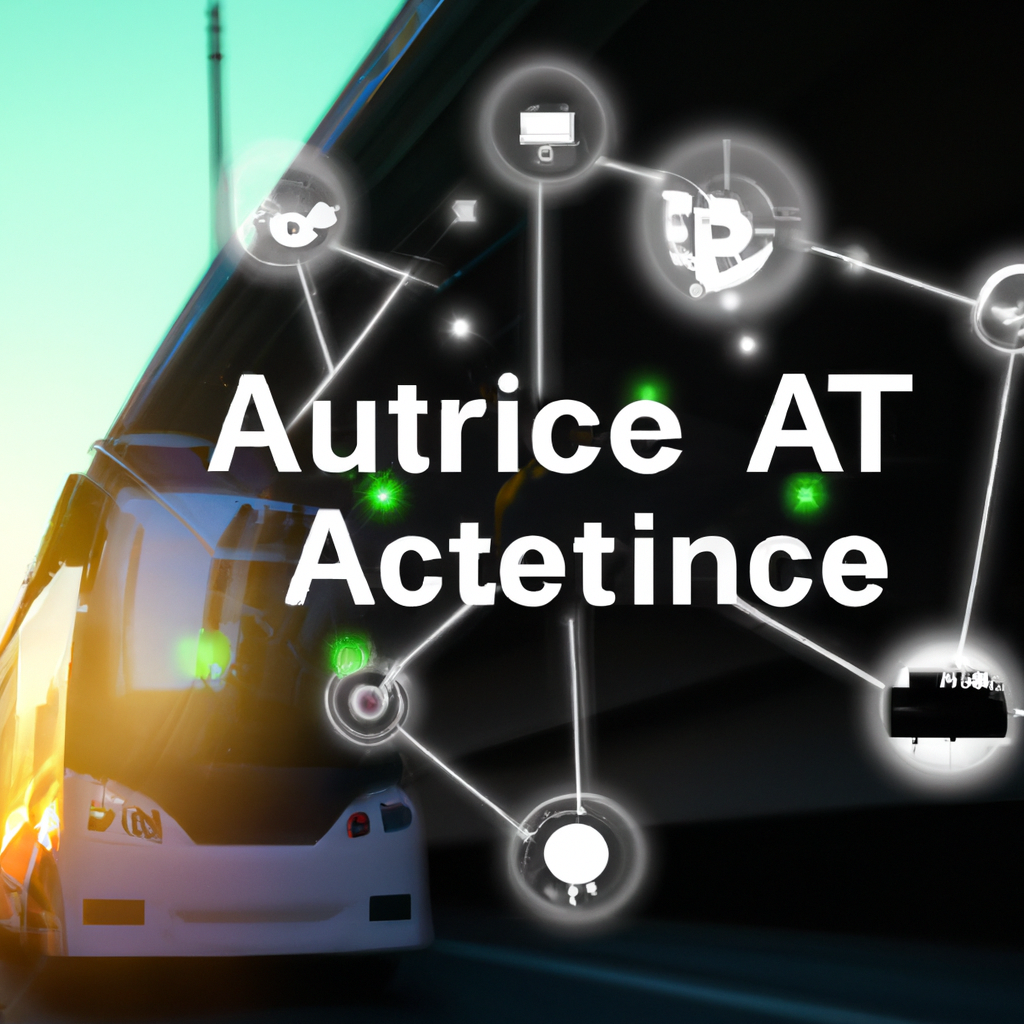-
Table of Contents
with AI-Powered Transportation Solutions.
Introduction
The use of Artificial Intelligence (AI) in transportation is revolutionizing the way we move people and goods. AI is being used to enhance the efficiency and safety of transportation systems, from autonomous vehicles to smart traffic management systems. AI-driven technologies are helping to reduce traffic congestion, improve fuel efficiency, and reduce the number of accidents on the roads. AI is also being used to improve the customer experience, from providing real-time information to helping passengers find the best route. AI is transforming the transportation industry, and its potential is only beginning to be realized.
How AI is Revolutionizing the Transportation Industry
The transportation industry is undergoing a revolution, and it’s all thanks to artificial intelligence (AI). AI is transforming the way we move from one place to another, making it faster, safer, and more efficient.
AI is being used in a variety of ways to revolutionize the transportation industry. For example, AI-powered autonomous vehicles are being developed to reduce the number of accidents on the road. Autonomous vehicles use sensors, cameras, and other technologies to detect obstacles and navigate around them. This technology is also being used to improve the efficiency of public transportation systems, such as buses and trains. AI can be used to optimize routes and schedules, as well as to monitor traffic conditions and adjust routes accordingly.
AI is also being used to improve the customer experience. AI-powered chatbots can be used to answer customer inquiries and provide personalized recommendations. AI can also be used to analyze customer data and provide insights into customer behavior, allowing companies to better understand their customers and provide better services.
Finally, AI is being used to improve the safety of transportation systems. AI-powered systems can detect potential hazards and alert drivers or operators to take action. AI can also be used to monitor the performance of vehicles and alert operators to potential problems.
The transportation industry is undergoing a major transformation thanks to AI, and it’s only going to get better. AI is making transportation faster, safer, and more efficient, and it’s revolutionizing the way we move from one place to another.
The Benefits of Autonomous Vehicles for Transportation
Autonomous vehicles are becoming increasingly popular in the transportation industry, and for good reason. Autonomous vehicles offer a number of benefits that can make transportation safer, more efficient, and more cost-effective. Here are some of the key benefits of autonomous vehicles for transportation.
Safety: Autonomous vehicles are designed to be safer than traditional vehicles. They use advanced sensors and software to detect and avoid obstacles, and they can react faster than human drivers. This means that autonomous vehicles can help reduce the number of accidents on the road.
Efficiency: Autonomous vehicles can help reduce traffic congestion by allowing vehicles to travel closer together and by reducing the need for human drivers. This can help reduce travel times and make transportation more efficient.
Cost-effectiveness: Autonomous vehicles can help reduce the cost of transportation by eliminating the need for human drivers. This can help reduce the cost of transportation for businesses and individuals alike.
Environmental Impact: Autonomous vehicles can help reduce emissions by reducing the need for human drivers. This can help reduce air pollution and help protect the environment.
Overall, autonomous vehicles offer a number of benefits for transportation. They can help make transportation safer, more efficient, and more cost-effective. They can also help reduce emissions and protect the environment. If you’re looking for a way to make transportation safer and more efficient, autonomous vehicles may be the answer.
Exploring the Impact of AI on Traffic Congestion
Traffic congestion is a major problem in many cities around the world. It can lead to increased air pollution, wasted time, and frustration for drivers. Fortunately, artificial intelligence (AI) is being used to help reduce traffic congestion and improve the flow of traffic.
AI can be used to analyze traffic patterns and identify areas of congestion. By using sensors and cameras, AI can detect when traffic is slowing down and alert drivers to take alternate routes. This can help reduce the amount of time drivers spend stuck in traffic.
AI can also be used to optimize traffic signals. By analyzing traffic patterns, AI can adjust the timing of traffic signals to reduce congestion. This can help reduce the amount of time drivers spend waiting at red lights.
AI can also be used to improve public transportation. By analyzing data from buses and trains, AI can help optimize routes and schedules to reduce wait times and improve efficiency. This can help reduce the number of cars on the road and reduce traffic congestion.
Finally, AI can be used to improve ride-sharing services. By analyzing data from ride-sharing services, AI can help match drivers with passengers more efficiently. This can help reduce the number of cars on the road and reduce traffic congestion.
Overall, AI is having a positive impact on traffic congestion. By analyzing data and optimizing traffic signals, public transportation, and ride-sharing services, AI is helping to reduce traffic congestion and improve the flow of traffic.
The Role of AI in Optimizing Public Transportation
Public transportation is an essential part of modern life, providing people with access to jobs, education, and other important services. Unfortunately, many public transportation systems are inefficient and unreliable, leading to overcrowding, delays, and other issues. Fortunately, artificial intelligence (AI) is helping to improve public transportation systems around the world.
AI can be used to optimize public transportation in a variety of ways. For example, AI can be used to analyze data from sensors on buses and trains to identify patterns in traffic and passenger flow. This data can then be used to adjust routes and schedules to reduce delays and overcrowding. AI can also be used to predict when and where maintenance is needed, helping to reduce the number of breakdowns and delays.
AI can also be used to improve the customer experience. AI-powered chatbots can be used to answer customer inquiries quickly and accurately, while AI-powered voice assistants can be used to provide real-time updates on routes and schedules. AI can also be used to analyze customer feedback and identify areas for improvement.
Finally, AI can be used to improve safety on public transportation. AI-powered cameras can be used to monitor passengers and alert authorities to any suspicious activity. AI can also be used to analyze data from sensors on buses and trains to identify potential safety hazards.
Overall, AI is playing an increasingly important role in optimizing public transportation systems around the world. By using AI to analyze data, predict maintenance needs, improve the customer experience, and enhance safety, public transportation systems can become more efficient, reliable, and safe.
The Potential of AI for Enhancing Transportation Safety
The potential of artificial intelligence (AI) for enhancing transportation safety is immense. AI can be used to improve the safety of all types of transportation, from cars and trucks to planes and trains. AI can help reduce the number of accidents, improve the efficiency of transportation systems, and even help prevent disasters.
AI can be used to detect potential hazards on the road. For example, AI-powered cameras can detect objects in the road ahead and alert drivers to potential dangers. AI can also be used to detect traffic patterns and alert drivers to potential hazards. AI can also be used to detect and alert drivers to potential collisions, helping to reduce the number of accidents.
AI can also be used to improve the efficiency of transportation systems. AI-powered systems can be used to optimize routes, reduce traffic congestion, and even predict traffic patterns. This can help reduce the amount of time it takes to get from one place to another, making transportation safer and more efficient.
AI can also be used to help prevent disasters. AI-powered systems can be used to detect potential problems in transportation systems, such as mechanical failures or human errors. AI can also be used to detect potential threats, such as terrorist attacks or natural disasters. By detecting potential threats early, AI can help prevent disasters before they occur.
The potential of AI for enhancing transportation safety is immense. AI can be used to detect potential hazards, improve the efficiency of transportation systems, and even help prevent disasters. By leveraging the power of AI, we can make transportation safer and more efficient for everyone.
Conclusion
In conclusion, AI and transportation are two powerful forces that are transforming the way we move around the world. AI is helping to make transportation more efficient and safer by providing real-time data and insights, automating processes, and improving the accuracy of predictions. AI is also helping to reduce traffic congestion, improve the safety of drivers and passengers, and reduce the environmental impact of transportation. As AI continues to evolve, it will continue to revolutionize the way we move around the world, making transportation more efficient and safer for everyone.





